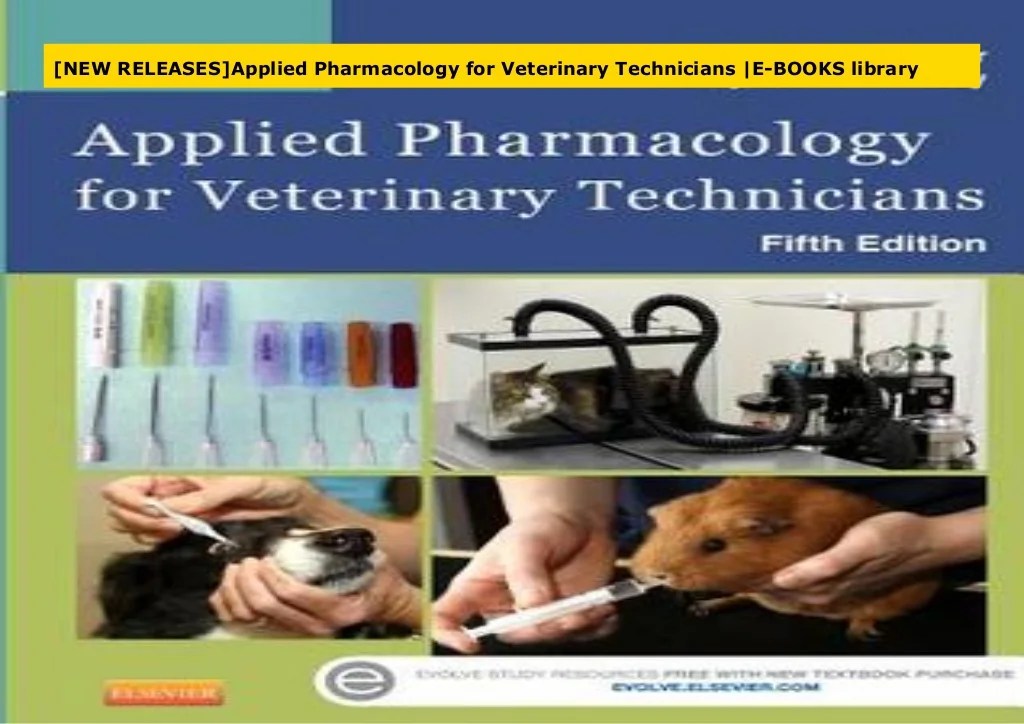Practical pharmacology for veterinary technicians is a critical discipline that equips veterinary professionals with the knowledge and skills necessary to safely and effectively administer medications to animals. This comprehensive guide provides an overview of the principles of pharmacology, drug classes, calculations and dosing, monitoring and assessment, adverse drug reactions, and legal and ethical considerations, empowering veterinary technicians to play a vital role in ensuring the well-being of animals.
Introduction: Practical Pharmacology For Veterinary Technicians
Practical pharmacology for veterinary technicians involves the application of pharmacological principles to veterinary medicine. It is essential for veterinary technicians to have a solid understanding of pharmacology to safely and effectively administer medications to animals.
Principles of Pharmacology
Pharmacology is the study of the effects of drugs on living organisms. It includes the principles of drug absorption, distribution, metabolism, and excretion (ADME). Drugs can be administered through various routes, including oral, parenteral, and topical.
Drug Classes
- Antimicrobials: Used to treat bacterial, viral, and fungal infections
- Antiparasitics: Used to treat infestations with parasites
- Analgesics: Used to relieve pain
- Anesthetics: Used to induce unconsciousness during surgery
- Anti-inflammatories: Used to reduce inflammation
Calculations and Dosing

Veterinary technicians must be able to accurately calculate drug doses. This involves understanding drug concentrations, volumes, and body weights. There are various methods of drug administration, including oral, intravenous, and subcutaneous.
Monitoring and Assessment, Practical pharmacology for veterinary technicians
Monitoring and assessing the effects of drugs is crucial to ensure patient safety and efficacy. This involves observing the animal for signs of adverse reactions, monitoring vital signs, and conducting laboratory tests.
Adverse Drug Reactions
Adverse drug reactions (ADRs) are undesirable effects that can occur as a result of drug therapy. ADRs can range from mild to life-threatening. Veterinary technicians must be able to recognize and manage ADRs.
Legal and Ethical Considerations
Veterinary technicians have a legal and ethical responsibility to use drugs safely and effectively. This includes understanding the laws governing drug use and adhering to ethical principles.
FAQs
What is the primary goal of practical pharmacology for veterinary technicians?
To provide veterinary technicians with the knowledge and skills necessary to safely and effectively administer medications to animals.
What are the key principles of pharmacology that veterinary technicians should understand?
Principles of drug absorption, distribution, metabolism, and excretion; mechanisms of drug action; and factors affecting drug response.
What are the different routes of drug administration that veterinary technicians may encounter?
Oral, intravenous, intramuscular, subcutaneous, topical, and transdermal.
How do veterinary technicians calculate drug doses?
Using mathematical formulas that consider factors such as the patient’s weight, species, and the desired drug concentration.
What are the responsibilities of veterinary technicians in monitoring and assessing the effects of drugs?
Observing the patient’s response to medication, identifying potential adverse effects, and reporting any concerns to the veterinarian.